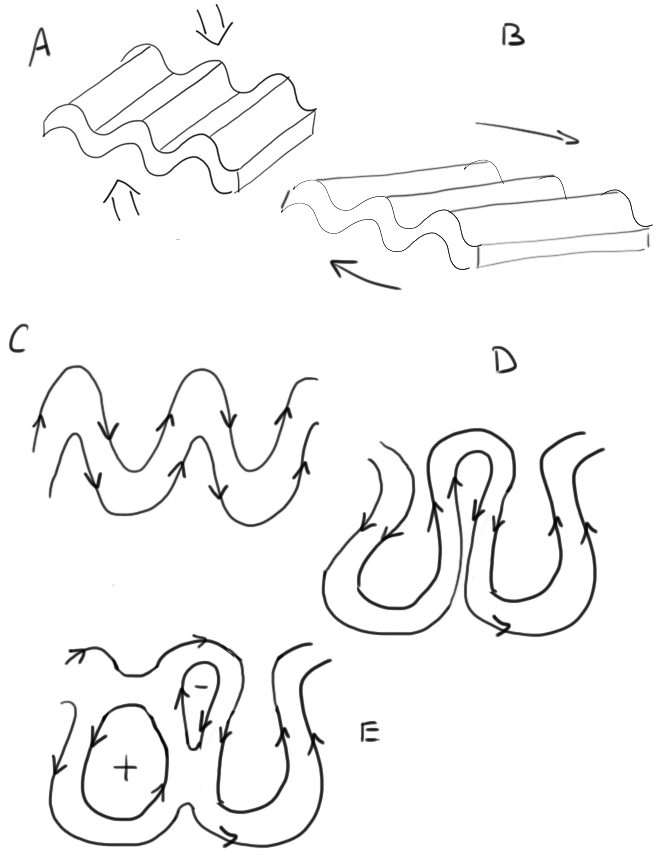| EPoS Contribution |
|
The formation of filaments by reconnection in magnetized sheets
Eric Keto CfA, Cambridge, US | |
| Recent observations motivate an hypothesis for the formation of filaments in magnetized sheets. Observations of the L1495/B213 filament in Taurus show bundles of sub-filaments distinguished by their individual velocities. The typical 5:1 aspect ratio of a sub-filament and the further lengthwise fragmentation of some sub-filaments into cores suggests a lengthwise orientation of the magnetic field. Magnetic pressure perpendicular to the long axis helps separate the sub-filaments within their bundles while allowing the gas to slip along the sub-filaments and form individual cores. However, observations of the polarization of background starlight by low density gas surrounding the B213 filament indicate that the larger scale magnetic field outside the filament is mostly perpendicular to the filament. One way this can happen is by shear and folding along the filaments. If neither the magnetic forces nor the inertial forces of the flows dominate (equipartition or plasma Beta=1) then each can affect the other. If the initial compression is not completely symmetric and has secondary velocity components, then shear along the filament may align the internal field along the filament, create folds in the sheet, and push the folds together. The folding brings field lines of opposing orientation together where reconnection creates isolated flux tubes which are the bundled sub-filaments. The reconnection geometry by shear and folding is similar to that in the magneto-rotational instability, but the formation of filaments is driven by external forces, the shear, rather than an instability. Our most recent observations, a large survey of filaments in several massive star-forming regions also suggests changing field orientations in some filaments. This survey compares the polarization in dense gas within the filaments (SMA interferometer) against the polarization in more diffuse gas around the filaments (JCMT single-dish). In most cases, the large and small scale magnetic fields are in the same direction, perpendicular to the filaments. However, a significant fraction of the filaments have their internal magnetic fields aligned parallel to the filaments and perpendicular to the larger scale field. In this presentation, I will explain the hypothetical model and show some results of our new SMA polarization survey of filaments. | |
 | |
| Caption: Reconnection in folding sheets. In panel "A" we see a 3D view of a piece of a filament created by converging flows with the orientation of the magnetic field (straight lines) perpendicular to filament. In "B", the shear aligns the internal field along the filament, creates folds in the sheet, and pushes the folds together. Panels "C" through "E" show in 2D how the folding brings field lines of opposing orientation together where reconnection creates isolated flux tubes which are the bundled sub-filaments. | |
|
Key publication
Suggested Sessions: Magnetic Fields | |

